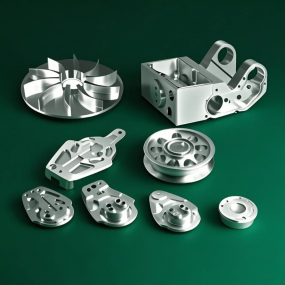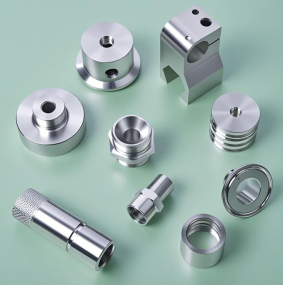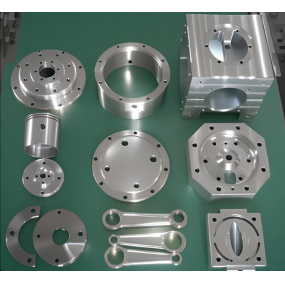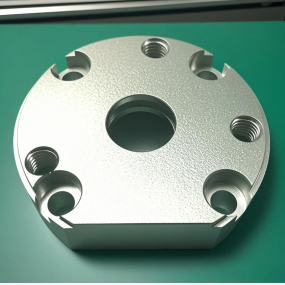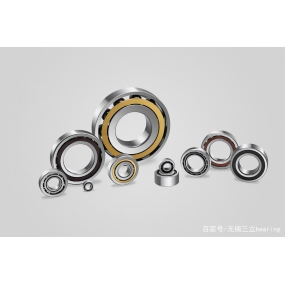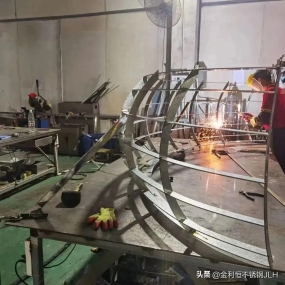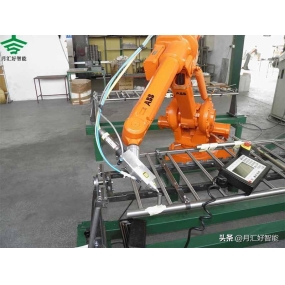Precision parts machining in Shenzhen used to be an ambiguous term. Turning centers with rotating tools were sometimes referred to as turning and milling machines. And there is a special metalworking operation that really deserves to be called "turning and milling", that is, cutting with a rotating milling cutter while the workpiece rotates.
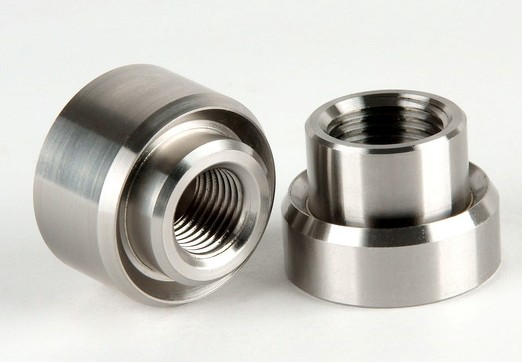 There are several reasons why a workshop would want to use this machining method. Easy chip control is one. Intermittent cutting is another reason. The wiper blade mounted on the tool follows closely and stands out slightly more than the blade for cutting. The purpose is to machine a good surface roughness of the part. Eccentric turning starts from the center of the rotating workpiece to ensure that the cutting edge cuts slowly into the workpiece.
There are several reasons why a workshop would want to use this machining method. Easy chip control is one. Intermittent cutting is another reason. The wiper blade mounted on the tool follows closely and stands out slightly more than the blade for cutting. The purpose is to machine a good surface roughness of the part. Eccentric turning starts from the center of the rotating workpiece to ensure that the cutting edge cuts slowly into the workpiece.
Facing challenges in precision parts processing
Here are some special technical challenges solved by numerical control turning and milling in Shenzhen:
The wiper insert mounted on the tool follows closely and protrudes slightly more than the cutting insert. The purpose is to machine a good surface roughness of the part.
The eccentric turning starts from the center of the rotating workpiece to ensure that the cutting edge slowly cuts into the workpiece.
Large metal removal rate machining: If the turning part needs to remove a large amount of margin, Shenzhen numerical control turning and milling machining should be the best choice.
Intermittent cutting: Turning tools are usually not very good for intermittent cutting, while milling cutters can do it well. Milling is often defined as a kind of intermittent cutting. So whenever you encounter intermittent cutting, you should think of changing turning to numerical control turning and milling.
Excellent chip breaking machining: Many machining practices have proved that for some parts and materials, turning and milling instead of turning can eliminate the phenomenon of "bird‘s nest "-like chips entangled in the cutter head in the past. Because milling with natural chip breaking machining advantages is combined in cutting, continuous chips are broken into small fragments that are easy to remove.
Flexible shaft machining: When turning long and thin parts that cannot be supported in the middle, using Shenzhen numerical control turning and milling can better prevent the parts from flexing (bending) during processing. Compared with turning, theoretically, milling can cut parts under very little pressure on the tool. But in practice, a lot of technical problems need to be solved.
Long-term machining: In the cutting of difficult-to-machine materials, the service life of a turning tool is very short, while the milling cutter can be used for a long time because it distributes the cutting load through multi-edge cutting. Since the milling cutter has a long service life, it can save the trouble of multiple tool changes in the middle of cutting.
Eccentric machining or special-shaped precision parts machining: The radial (X-axis) motion of the milling cutter can be matched with the rotational motion of the workpiece to machine the outline of complex parts. The same principle, in a single clamping, the part rotates and the milling cutter reciprocates, can also machine eccentric asymmetric parts in a single clamping. Machining an eccentric shaft on the crankshaft of an automobile engine is also a good example. But a lot of research work needs to be done in terms of machining accuracy.


 Spanish
Spanish Arabic
Arabic French
French Portuguese
Portuguese Belarusian
Belarusian Japanese
Japanese Russian
Russian Malay
Malay Icelandic
Icelandic Bulgarian
Bulgarian Azerbaijani
Azerbaijani Estonian
Estonian Irish
Irish Polish
Polish Persian
Persian Boolean
Boolean Danish
Danish German
German Filipino
Filipino Finnish
Finnish Korean
Korean Dutch
Dutch Galician
Galician Catalan
Catalan Czech
Czech Croatian
Croatian Latin
Latin Latvian
Latvian Romanian
Romanian Maltese
Maltese Macedonian
Macedonian Norwegian
Norwegian Swedish
Swedish Serbian
Serbian Slovak
Slovak Slovenian
Slovenian Swahili
Swahili Thai
Thai Turkish
Turkish Welsh
Welsh Urdu
Urdu Ukrainian
Ukrainian Greek
Greek Hungarian
Hungarian Italian
Italian Yiddish
Yiddish Indonesian
Indonesian Vietnamese
Vietnamese Haitian Creole
Haitian Creole Spanish Basque
Spanish Basque

